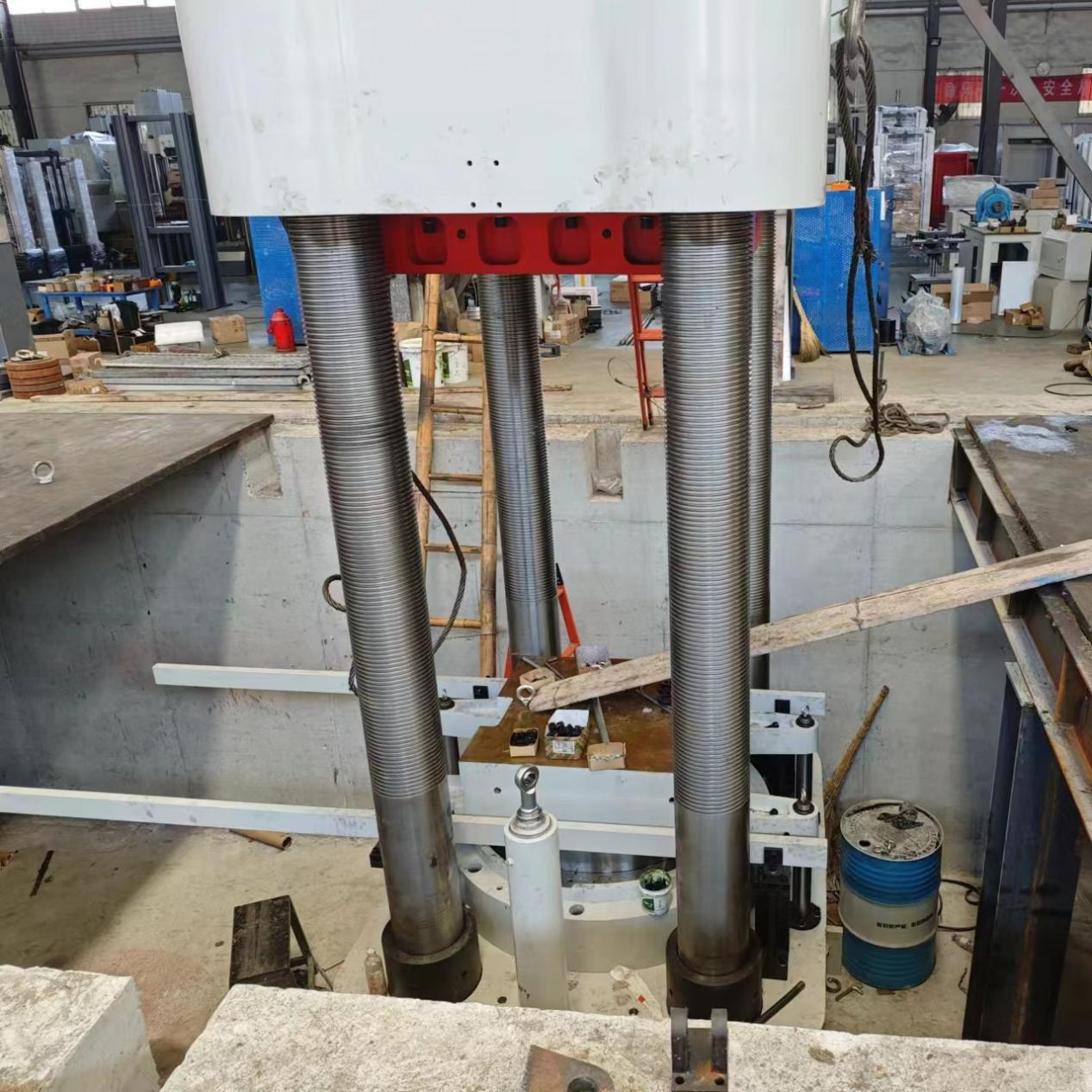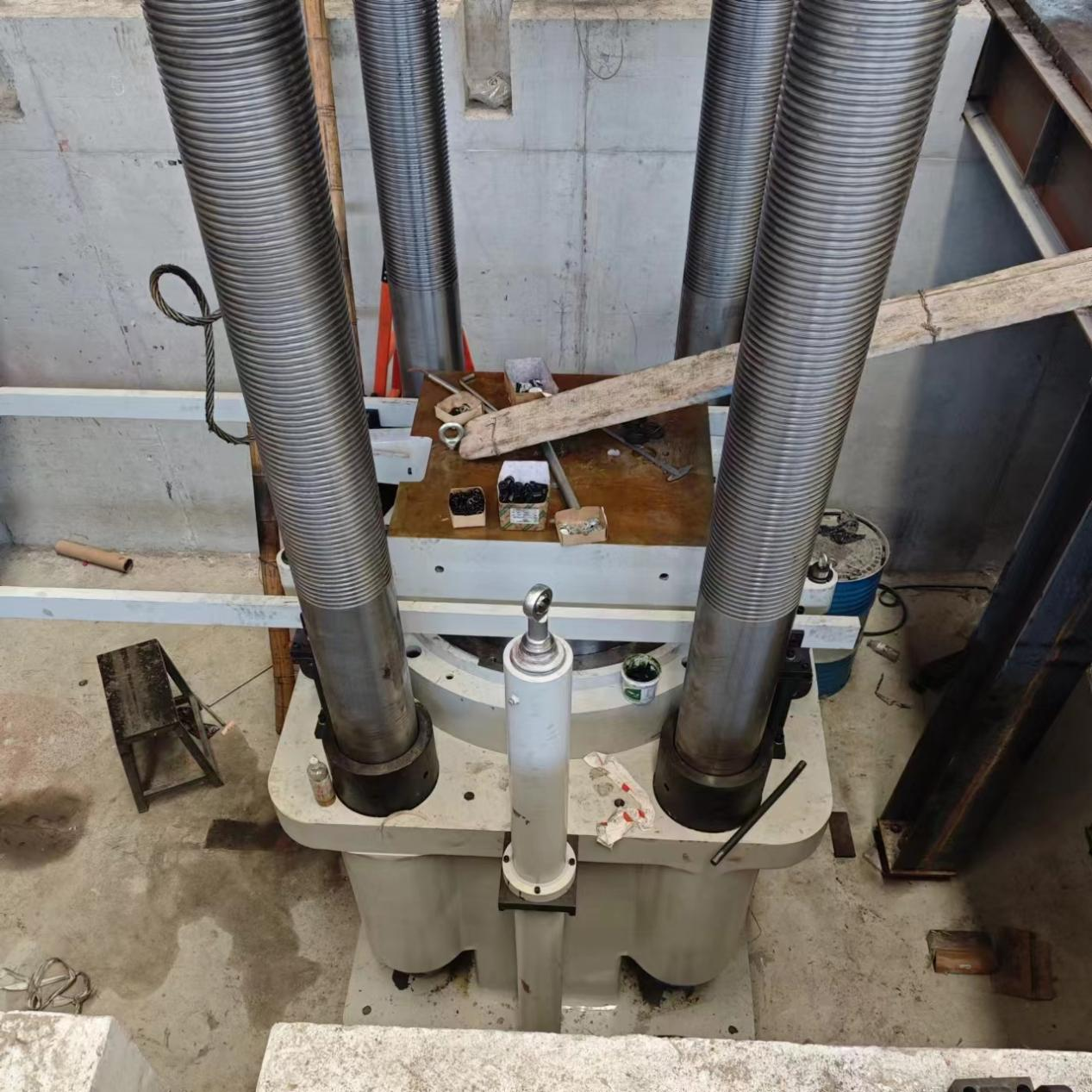In the realm of geotechnical engineering, understanding the behavior of materials under various stress conditions is crucial for ensuring the stability and safety of infrastructure. One of the most critical tools for this purpose is the long column compression shear tester. These machines, particularly those with a capacity of up to 3000 tons, are indispensable for evaluating the performance of large-span concrete structures. By simulating real-world conditions, they provide engineers with vital data on how these structures respond to compressive and shear forces. This information is essential for designing robust foundations, bridges, dams, retaining walls, and tunnels that can withstand the demands of their environment. As infrastructure projects grow in scale and complexity, the role of long column compression shear testing machines in geotechnical engineering becomes ever more significant, ensuring that structures are both safe and durable.

Long column compression shear testers are vital in geotechnical engineering due to their ability to:
1.Evaluate Material Properties: Assessing the strength, elasticity, and deformation characteristics of concrete and other construction materials.
2.Ensure Structural Integrity: Testing the load-bearing capacity of large-span concrete components to prevent structural failures.
3.Inform Design Decisions: Providing empirical data that guides the design and optimization of foundations, bridges, dams, retaining walls, and tunnels.
4.Enhance Safety: Identifying potential failure modes and developing strategies to mitigate risks, thereby enhancing the overall safety of the structures.
A comprehensive understanding of the technical specifications of long column compression shear testers is essential for their effective use in geotechnical engineering:
1.Load Capacity: Typically up to 3000 tons (27,216 kN), allowing for the testing of very large and heavy concrete components.
2.Hydraulic System: High-capacity pumps and actuators to apply precise and controlled loads.
3.Control System: Advanced digital controllers for accurate load application and data acquisition.
4.Measurement Instruments: High-precision load cells, displacement sensors, and strain gauges to measure forces, deformations, and material responses.
5.Frame and Structure: Robust and rigid frames to ensure stability and minimize deflection during testing.
The acceptance of a long column compression shear tester involves rigorous testing to validate its performance:
1.Calibration: Ensuring the accuracy of load cells and sensors against known standards.
2.Load Testing: Applying loads up to the machine's maximum capacity to verify structural integrity and performance.
3.Functional Testing: Confirming that all control systems and safety features operate correctly.
4.Data Accuracy: Comparing recorded data against expected results to ensure precision.
Calibration is critical for ensuring reliable test results:
1.Standard Procedures: Following ASTM and ISO standards for calibration to maintain consistency and accuracy.
2.Traceability: Using reference standards that are traceable to national or international standards.
3.Regular Calibration: Performing scheduled recalibrations to maintain the accuracy of measurements over time.
Evaluating the machine's load capacity and performance under various conditions is essential:
1.Max Load Testing: Verifying the machine's ability to apply and sustain loads up to 3000 tons.
2.Load Distribution: Ensuring even and consistent load application across the test specimen.
3.Structural Integrity: Monitoring for deflections or deformations in the machine frame during maximum load tests.
The effectiveness of the control system is vital for precise testing:
1.Precision Control: Accurate control over load application, including rate and magnitude.
2.Automation: Enhancing efficiency and reducing human error through automated testing sequences.
3.Data Logging: Real-time data acquisition and logging for comprehensive analysis and reporting.
Safety is paramount when operating high-capacity testing machines:
1.Emergency Stops: Mechanisms to quickly halt operations in case of emergencies.
2.Safety Shields: Protective barriers to safeguard operators from potential hazards.
3.Compliance: Adherence to OSHA and other relevant safety standards.
4.Operator Training: Ensuring personnel are well-trained in safety protocols and machine operation.
Practical applications and case studies highlight the value of these machines:
1.Bridge Testing: Simulating real-world stresses on bridge components to validate design parameters and ensure structural safety.
2.Dam Construction: Evaluating concrete blocks used in dam construction to assess their load-bearing capacity and long-term durability.
3.Retaining Walls: Testing the interaction between soil and concrete in retaining wall designs to prevent failures.
4.Tunnel Supports: Assessing the performance of tunnel linings and support systems under significant ground pressure.
The acceptance and utilization of a 3000-ton long column compression shear tester involve comprehensive evaluation and validation. These machines are indispensable in geotechnical engineering, providing critical data for designing and maintaining large-span concrete structures. By adhering to stringent acceptance criteria and leveraging advanced technology, these testing machines enhance the safety, reliability, and longevity of infrastructure projects.

2.1 Foundation Analysis
1.Soil-Structure Interaction: Understanding how different soil types interact with concrete foundations under compressive and shear loads.
2.Load Distribution: Analyzing the uniformity of load distribution across foundation materials to identify potential weak points.
2.2 Bridge and Dam Testing
1.Bridge Components: Testing individual components such as beams, columns, and slabs to ensure they meet design specifications and safety requirements.
2.Dam Segments: Evaluating the behavior of large concrete segments under extreme loads to prevent catastrophic failures.
2.3 Retaining Wall Design
1.Material Properties: Assessing the compressive strength and shear resistance of materials used in retaining wall construction.
2.Failure Modes: Identifying and mitigating potential failure modes through comprehensive testing.
2.4 Tunnel Construction
1.Pressure Resistance: Testing the ability of tunnel linings to withstand external pressures from surrounding soil and water.
2.Longevity Assessment: Evaluating the long-term performance of tunnel support systems under sustained loads.
3.1 Load Capacity
1.Peak Load Handling: Ensuring the machine can handle the peak loads without structural damage or performance degradation.
2.Load Uniformity: Maintaining consistent load application to avoid localized stresses and potential failure points.
3.2 Hydraulic System
1.Pump Capacity: Ensuring the hydraulic system can generate the required pressures for maximum load applications.
2.System Redundancy: Incorporating redundant systems to prevent failure during critical tests and ensure continuous operation.
3.3 Control Mechanisms
1.Precision: High-precision control mechanisms to apply exact loads and measure responses accurately.
2.Feedback Systems: Real-time feedback systems for monitoring and adjusting loads to maintain test integrity.
3.4 Measurement Instruments
1.Load Cells: High-accuracy load cells for precise measurement of applied forces.
2.Displacement Sensors: Accurate sensors to measure deformations and displacements under load conditions.
4.1 Calibration Standards
1.ASTM Standards: Adhering to ASTM standards for calibration processes to ensure measurement accuracy and consistency.
2.ISO Guidelines: Following ISO guidelines for calibration to maintain international standards of precision and reliability.
4.2 Load Testing Protocols
1.Step Load Testing: Gradually increasing the load to identify failure points and material behavior under incremental stresses.
2.Cycle Testing: Repeated loading and unloading cycles to assess material fatigue and long-term performance.
4.3 Functional Verification
1.Control Systems: Verifying the accuracy and reliability of control systems in applying and maintaining test loads.
2.Safety Mechanisms: Ensuring all safety features are functional and effective under load conditions.
6.1 Max Load Testing
1.Stress Testing: Applying maximum load to assess the machine's capability to handle extreme stresses without failure.
2.Deflection Analysis: Monitoring for deflections or deformations in the machine's structure during maximum load tests to ensure structural integrity.
6.2 Load Distribution Analysis
1.Uniform Load Application: Ensuring the load is evenly distributed across the test specimen to prevent localized stress concentrations.
6.3 Structural Integrity Checks
1.Frame Analysis: Conducting thorough checks on the machine's frame to ensure it can withstand maximum loads without compromising structural integrity.
7.1 Precision Control Systems
1.Load Application: Ensuring precise control over the rate and magnitude of load application to maintain test accuracy.
2.Automated Testing: Implementing automated testing cycles to enhance efficiency and reduce the potential for human error.
7.2 Data Acquisition
1.Real-Time Data: Capturing real-time data for immediate analysis and verification of test conditions.
2.Logging and Reporting: Comprehensive data logging to generate detailed reports and support in-depth analysis.
8.1 Emergency Protocols
1.Quick Response: Ensuring emergency stop mechanisms can quickly halt operations in case of any anomalies.
2.Operator Training: Providing thorough training for operators on emergency procedures and safety protocols.
8.2 Safety Compliance
1.OSHA Standards: Adhering to OSHA standards for workplace safety and operational procedures.
2.Safety Audits: Conducting regular safety audits to ensure ongoing compliance and address any potential hazards.
9.1 Bridge Testing Examples
1.Case Study: Testing a bridge component under simulated load conditions to validate design parameters and ensure structural safety.
2.Outcome Analysis: Reviewing test outcomes to improve design standards and safety measures.
9.2 Dam Construction Applications
1.Concrete Segment Testing: Assessing the load-bearing capacity and durability of concrete segments used in dam construction.
2.Long-Term Performance: Evaluating the long-term performance and resilience of dam components under sustained loads.
9.3 Tunnel Support Systems
1.Pressure Resistance: Testing the ability of tunnel linings to withstand external pressures from surrounding soil and water.
2.Long-Term Durability: Assessing the long-term durability and performance of tunnel support systems under sustained and dynamic loads.
By meticulously analyzing the performance of large-span concrete structures using long column compression shear testers, engineers can ensure the safety, stability, and longevity of critical infrastructure projects, thereby contributing to the advancement and reliability of geotechnical engineering.